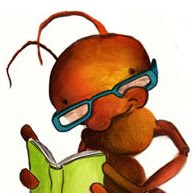 Notice to the World: Fire sale of U.S. assets! Everything must go to raise immediate cash! Contact us with your best offer!
Notice to the World: Fire sale of U.S. assets! Everything must go to raise immediate cash! Contact us with your best offer!The Trillion-Dollar Meltdown, by Charles R. Morris
Rating: 4 ants.

How the current credit meltdown developed and why it’s got everyone so scared.
It’s in the news every day: Abu Dabi, Dubai, China, Japan, India, South Korea, Russia are all being courted to buy U.S. banks, financial institutions and investments, and other assets to keep us afloat. How did the richest nation on earth fall so deeply into debt?
As Morris explains, it wasn’t hard, thanks to computerized financial models and instruments, monetary deregulation or no regulation, economic amnesia, and good old-fashioned GREED. This toxic combination has bankrupted many of our largest financial institutions, crippled our economy, thrown millions out of their homes, and mortgaged the financial future of our country for years to come.
Over the past few years, the Bush administration and the Federal Reserve actually loosened regulation and did nothing to stop the housing bubble. And there’s no end in sight for the next couple of years. Here are a few of the consequences so far:
1. Because banks and others have lost billions, they have little or no cash to extend credit to businesses for growth. Recession may go into depression.
2. The country is in an economic freefall, and no one really knows what to do about it. The cure is likely to be a wrenching loss of jobs, income, and growth before things can be turned around.
3. Millions of people have been thrown out of their homes. Communities are suffering a kind of blight many have not seen since the Great Depression—or have not ever seen in their history.
4. Job losses are likely to continue as the double whammy of rising prices and the falling economy hits ordinary businesses and their people.
5. We are experiencing the largest wealth gap between the top 10 percent and the rest of us since the late 1800s. While financial executives and unethical brokers walk away with millions, the rest of us will pay for their greed and failure by footing the bill for massive bailouts of financial institutions.
Read this book—Charles Morris is one of those rare financial birds: someone who sees beneath the hype and denial and can tell you the truth.
Be warned that he has to use a bewildering array of acronyms: CLO, CDO, SIV, LIBOR, HFs, etc. Just know that they represent financial instruments used by brokerage firms, mortgage brokers, and banks to make money from packaging people’s mortgages and selling them and reselling them. And these instruments were bought by other countries as investments. As the mortgages started going bad, these countries lost billions—and continue to lose billions more as the credit crisis keeps spreading.
Unfortunately, this isn’t the first meltdown. Remember the 2001-2003 dot.com bust or the S & L bailouts of the 1980s? Don’t we ever learn anything from the past? The short answer is NO. Why? The amount of money to be made from these bubbles is simply too hypnotizing. Once greed kicks in, these bubbles feed on themselves, and when they burst, they leave a path of destruction that takes years to repair. The top players take their millions and leave the rest of us to pay the bill—ruining our dreams of a home of our own, a secure retirement, money for health care, for our children’s education, for future economic growth.
Charles Morris’s book inspires a new definition of GREED: Getting Rich at the Expense of Everyone else’s Dreams.--Sue B.




